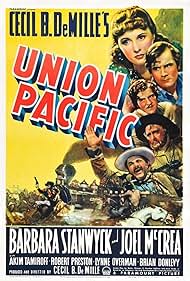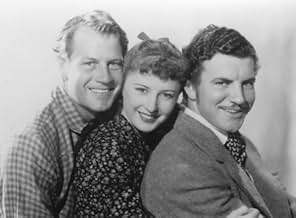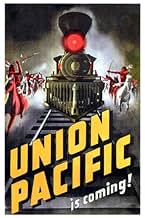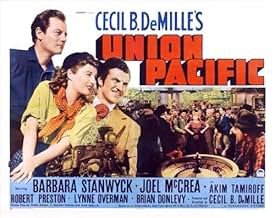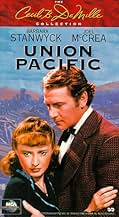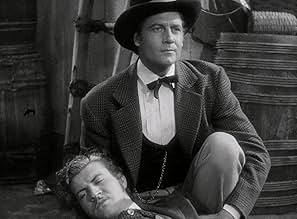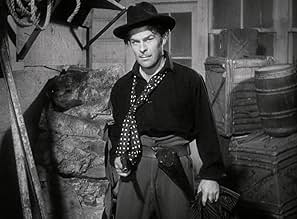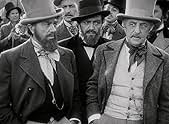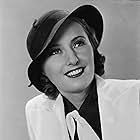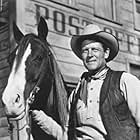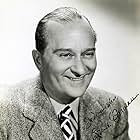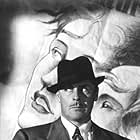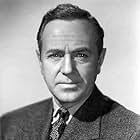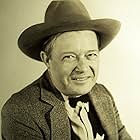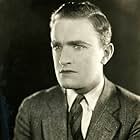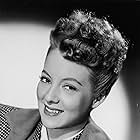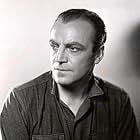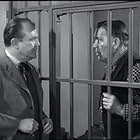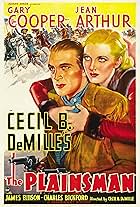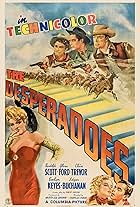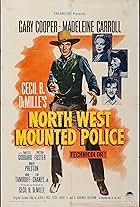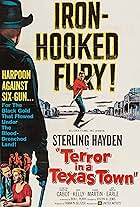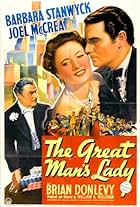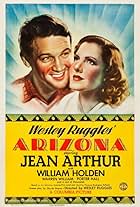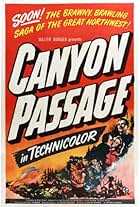IMDb RATING
7.0/10
3.5K
YOUR RATING
In 1862, Central Pacific and Union Pacific Railroads compete westward across the wilderness toward California.In 1862, Central Pacific and Union Pacific Railroads compete westward across the wilderness toward California.In 1862, Central Pacific and Union Pacific Railroads compete westward across the wilderness toward California.
- Nominated for 1 Oscar
- 4 wins & 1 nomination total
Storyline
Did you know
- TriviaThe gold spike used at the ceremony to mark the end of the construction was the same spike used in the May 10, 1869 event, on loan from Stanford University.
- GoofsThe golden spike ceremony shown in the movie is not true. The golden spike was lowered into an auger hole not driven. Gold is a soft metal and striking it as they did in the movie would have severely damaged it. The original golden spike now at Stanford University shows no mallet marks on the head.
- Quotes
Jeff Butler: [informing Mollie that her husband Dick Allen is dead] He'll be waiting for us... at the end of track.
- ConnectionsFeatured in Fejezetek a film történetéböl: Amerikai filmtípusok - A western (1989)
- SoundtracksThe Rose of St. Louis
(uncredited)
Written by Stephan Pasternacki and Sigmund Krumgold
Sung by Sheila Darcy in the St. Louis saloon
Featured review
UNION PACIFIC is one Cecil B. DeMille film that could have used 1939's Technicolor to tell the sprawling story of the pioneers who built the railroads that united east and west. Nevertheless, DeMille does get across the enormous amount of work involved in building the rails while a lot of skullduggery was going on behind the scenes to prevent a team of workers to reach the midpoint first.
JOEL McCREA is the perfect western hero for DeMille's story and gives his usual easy performance as the enforcer who has to keep the villains from halting progress on the rails. BRIAN DONLEVY makes a perfect heel and ROBERT PRESTON shows genuine charm and gives a double-layered performance as McCrea's longtime pal caught under the influence of the bad guys who want to cause havoc. REGIS TOOMEY is underused in a very brief role as an ill-fated Irish rail worker.
BARBARA STANWYCK gives her Irish accent a good try and, while not always successful, delivers a very likable performance as the post office gal along for the ride. ANTHONY QUINN has a brief supporting role as a badman, but the most colorful support comes from AKIM TAMIROFF as Fiesta, the man with the whip, and LYNNE OVERMAN, both playing McCrea's scruffy bodyguards. And boy, does he need them! EVELYN KEYES has one line and disappears. But DeMille keeps track of all his extras, using them effectively in all the big mob scenes both indoor and out.
Again, Technicolor was still new in 1939 but GONE WITH THE WIND was using seven Technicolor cameras and DeMille probably had no choice but to film in B&W. Let's just say, this is the kind of story that cried for Technicolor which may have made some of the process shots less noticeable for backgrounds shot in a studio.
DeMille's tendency to let his films run over two hours is present here. At least twenty minutes or more could easily have been cut to keep the story in a tighter mode.
For DeMille fans, definitely worth seeing.
JOEL McCREA is the perfect western hero for DeMille's story and gives his usual easy performance as the enforcer who has to keep the villains from halting progress on the rails. BRIAN DONLEVY makes a perfect heel and ROBERT PRESTON shows genuine charm and gives a double-layered performance as McCrea's longtime pal caught under the influence of the bad guys who want to cause havoc. REGIS TOOMEY is underused in a very brief role as an ill-fated Irish rail worker.
BARBARA STANWYCK gives her Irish accent a good try and, while not always successful, delivers a very likable performance as the post office gal along for the ride. ANTHONY QUINN has a brief supporting role as a badman, but the most colorful support comes from AKIM TAMIROFF as Fiesta, the man with the whip, and LYNNE OVERMAN, both playing McCrea's scruffy bodyguards. And boy, does he need them! EVELYN KEYES has one line and disappears. But DeMille keeps track of all his extras, using them effectively in all the big mob scenes both indoor and out.
Again, Technicolor was still new in 1939 but GONE WITH THE WIND was using seven Technicolor cameras and DeMille probably had no choice but to film in B&W. Let's just say, this is the kind of story that cried for Technicolor which may have made some of the process shots less noticeable for backgrounds shot in a studio.
DeMille's tendency to let his films run over two hours is present here. At least twenty minutes or more could easily have been cut to keep the story in a tighter mode.
For DeMille fans, definitely worth seeing.
- How long is Union Pacific?Powered by Alexa
Details
Box office
- Budget
- $1,000,000 (estimated)
- Runtime2 hours 15 minutes
- Color
- Aspect ratio
- 1.33 : 1
Contribute to this page
Suggest an edit or add missing content

